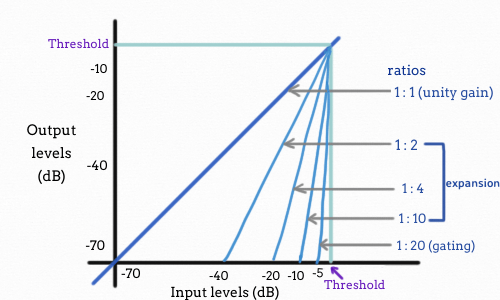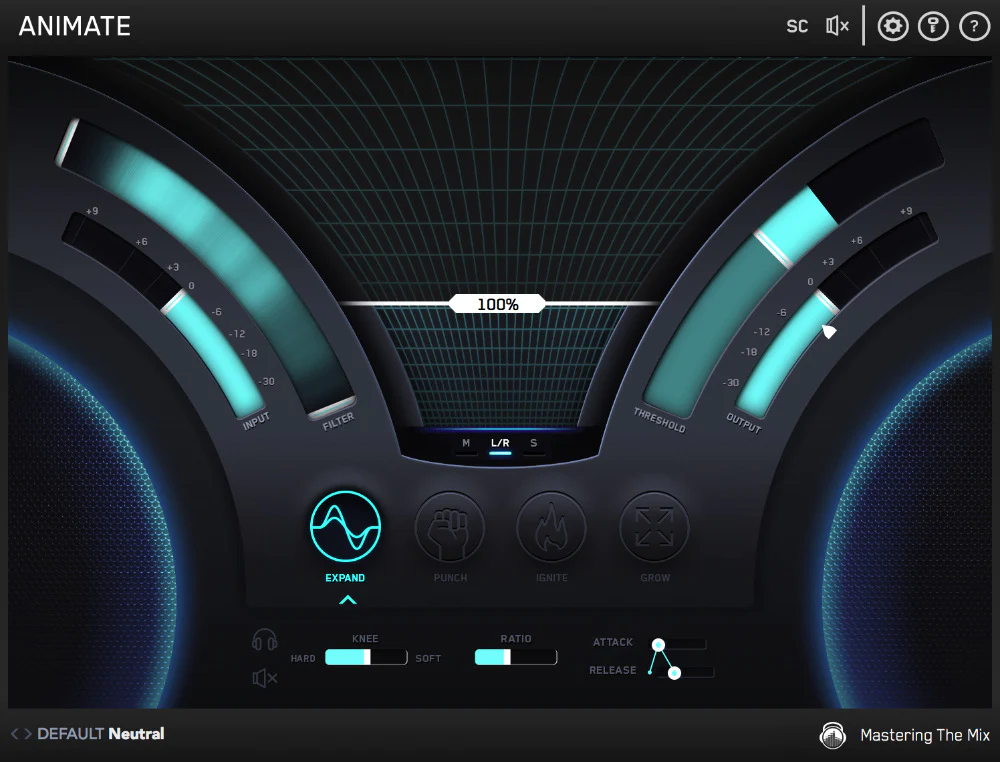What Is Audio Expansion
Introduction
We are passionate about giving modern musicians the best tools and technology available. If you understand both upward and downward expansion, you’ll find this process much easier to handle.
Although not as commonly used as other techniques in music production, audio dynamics expansion is still an important tool. When you know how to use it, you’ll be ready to improve your mix whenever the need arises.
Here, we’ll break down the basics of audio dynamics expansion and give you some simple tips to help you understand and master this valuable process. Let’s get started.
What Defines Audio Expansion?
The term “audio expansion” refers to increasing a signal’s dynamic range—it does the opposite of audio compression. Audio expanders, much like compressors and limiters, have adjustable thresholds and ratios. However, unlike compression and limiting, expansion happens when the signal level goes above the threshold.
Many people don’t realize there are actually two types of expansion. Downward expansion is commonly used to reduce low-level noise, such as hiss and hum. With upward expansion, the signal below the threshold remains unchanged—if the input increases by 2 dB, the output also increases by 2 dB. But when the signal goes above the threshold, levels increase even more.
Upward expansion is especially useful for percussive instruments like drums, hand percussion, and other similar sounds. It helps emphasize attacks and is often used for transient shaping. Imagine you have a drum loop with too much room sound.
Unlike traditional expansion, upward expansion lets the peaks stand out above the background room noise, without affecting the room sound itself. This is where upward expansion truly excels.

What is the Purpose of Expander in Audio?
Instead of compressing the dynamic range, you can actually expand it by using an expander rather than parallel compression or a compressor. Compression is commonly used to reduce loud transient peaks and maintain a consistent level.
However, compression can distort a signal because of how it processes the audio. This often results in the compressor emphasizing certain harmonics, depending on how it reacts to the incoming signal. On the other hand, expanders are most useful when you need a wider dynamic range, as they can provide this benefit.
The dynamic range of an audio signal is the difference between its loudest and quietest parts. Processors that manage audio dynamics directly affect the sound’s quality, and their names reflect how they change the dynamics.
Expanders make it possible to vary the volume of instrumental or vocal performances. This technique can create a more natural or organic sound, but it may also cause the sound to be less prominent in the mix.
What is Compression vs Expansion vs Gate?
Compression helps you reduce the volume of the loudest parts of a recording, making them closer in level to the quieter parts. By using audio compression, you can limit the dynamic range of an input or output signal. For example, think about the difference between someone singing softly and someone singing loudly.
Expanders and gates are very similar devices. The main difference is that an expander tracks the signal level after it drops below the threshold and gradually reduces the level based on how low it gets. In contrast, a gate instantly closes as soon as the signal falls below the threshold.
Downward expansion is a popular way to reduce low-level noises like hiss and hum. A downward expander works opposite to a compressor: instead of compressing the sound above a certain threshold, it gradually lowers the output level when the signal drops below that threshold.

With a 2:1 compression ratio, an increase in the input level of 2 dB above the threshold results in the output rising by only 1 dB above that threshold. Conversely, if the input level is decreased by 1 dB below the threshold, the output level drops by 2 dB.
Traditional expansion causes the room sound to decay more quickly, making quiet sounds even quieter. In contrast, upward expansion emphasizes the peaks above the room sound while leaving the background largely unchanged. For example, with a 1:2 expansion ratio, a 1 dB increase above the threshold will produce a 2 dB increase in the output.
Sometimes, you don’t want percussion hits to be too uniform in volume; instead, you may want the most important hits to stand out and be louder than the rest.
A phrase can be expanded by making it longer than expected. Additionally, because expanders do not completely eliminate the signal, they tend to sound more natural. They also offer greater control—thanks to intuitive controls, you can adjust how quickly the effect responds to changes in signal levels.
Many downward expanders include a range setting, which lets you set the maximum amount of attenuation so the signal is never totally cut off. Expanders are devices whose output levels decrease faster than their input levels. By further reducing the lower levels of the signal, you actually increase the dynamic range of the audio.
Expansion Parameters
Expanders make quiet sounds even quieter and loud sounds louder by increasing the difference in volume between parts of an audio recording. If you want to boost the dynamic range of your audio, using an expander can be very helpful.
If your recording is noisy, you might want to lower the volume of the quieter sections. However, using an expander can also change how quickly sounds fade out, which might end up silencing some of the softer parts of your audio. The main controls on an expander are the attack time, release time, and ratio.
The attack time sets how quickly the expander responds when the signal goes above the threshold. The release time controls how fast it reacts when the signal drops below the threshold.
The ratio determines how much the volume is reduced. A higher ratio means the volume is lowered more. When the ratio is 12:1 or higher, the expander acts as a noise gate.
Expanders can be used not only for standard audio processing, but also creatively for sound design and special effects.

What Does Expansion do in a Compressor?
Many engineers use the term ‘compression’ to describe downward compression—bringing down the level of the signal above the threshold set by your compressor, making louder sounds quieter.
But we often overlook upward compression, which raises quieter sounds up to the threshold. This technique can be very useful for achieving a more transparent sound in certain situations. Also, remember that expansion—both upward and downward—can be a powerful tool for your mix.
For example, if you have a dull snare sound, you might skip a static EQ and try upward expansion instead. This way, the harder the drummer hits, the more attack, snap, and clarity you get, while softer strokes and ghost notes keep their subtle character (and any unwanted resonances are less pronounced).
While classic compression is a beautiful thing when used well, it’s not the only option. Traditional compression has been used so much that even some electronic dance music producers are getting tired of it. So, what are they turning to? Expansion.
Conclusion
With an expander, you can add some punch to your music while still keeping incredible control. Dynamic processing is a technique that isn’t often discussed and is definitely underused.
If you understand both downward and upward expansion, you’re well on your way to mastering how to manage the dynamic range of a signal and truly improve your sound. Every audio signal can benefit from these processes, so this topic deserves more attention.
If you have any thoughts or questions about this process, please let us know in the comment section below. We’ll be more than happy to discuss and elaborate with you.






